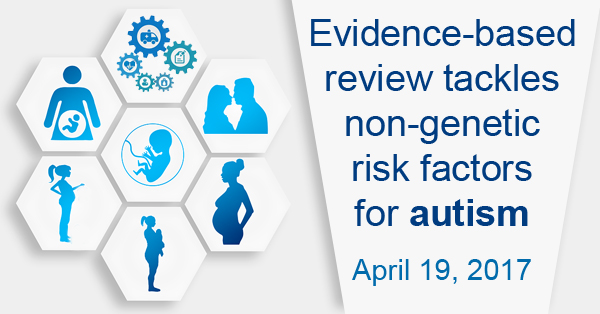Check out other stories from the Latest News
Researchers Probe Environmental Risk Factors for Autism
By Chelsea E. Toledo, M.A. on April 19, 2017

Background: Environmental risk factors comprise exposures and other biological features unrelated to DNA that are associated with an increased likelihood of developing a certain condition. In the case of Autism Spectrum Disorder (ASD), chemical exposures, birth complications, parental age and other factors encountered before or after birth have been identified as environmental risk factors.
What’s New: On March 17, 2017, the journal Molecular Autism published an evidence-based review of more than 100 potential environmental risk factors for ASD, ranking the strength of their association with ASD. The researchers looked at the evidence from 32 previously published meta-analyses and systemic reviews, each of those analyzing up to 25 studies on a single risk factor. From that extensive pool of data, they were able to conclude that:
- Advanced parental age and birth complications that cause trauma or oxygen deprivation are strongly related to a person’s risk of developing ASD. In addition, vitamin D deficiency appears to be common in children with ASD.
- Cesarean births, as well as obesity and diabetes during pregnancy, have a slight association with ASD in the resulting offspring.
- Vaccination, smoking during pregnancy, thimerosal exposure, and assisted reproductive technology most likely do not influence a person’s risk of developing ASD.
- Some heavy metals, such as mercury and lead, may have an association with ASD, and merit further investigation.
Why it’s important: This study helps to define which environmental factors for ASD merit a closer look from the research community. Future studies could further investigate those relationships to determine whether they do indeed influence the likelihood of ASD.
Help me understand :
| Source(s) : |
| Tweet |

